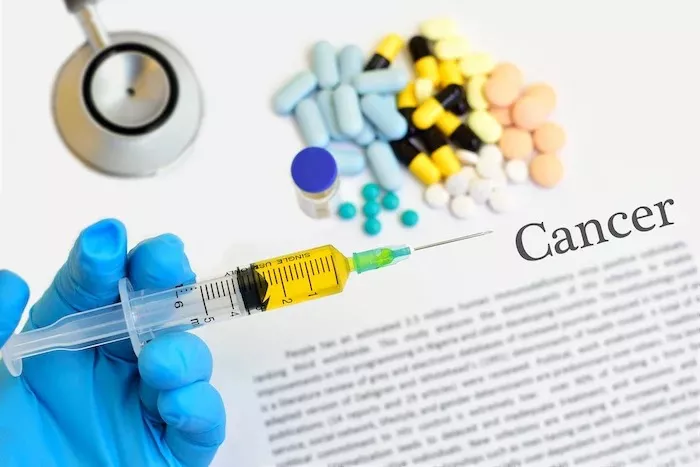Allergic reactions can range from mild discomfort to severe and life-threatening situations. Whether it’s a reaction to food, medication, insect stings, or environmental allergens, knowing how to manage an allergic reaction is crucial for the well-being and safety of individuals. In this article, we will explore the concept of allergic reactions, discuss common triggers, and provide strategies for effectively managing and responding to allergic reactions.
Understanding Allergic Reactions
Allergic reactions occur when the body’s immune system overreacts to a specific substance, known as an allergen. The immune system perceives the allergen as a threat and releases chemicals, such as histamine, to defend the body. These chemicals lead to the characteristic symptoms associated with allergic reactions. Understanding the underlying mechanisms of allergic reactions is essential for effectively managing them.
Common Allergy Triggers:
Allergic reactions can be triggered by a wide range of substances. Some of the most common triggers include:
Food Allergies: Certain foods, such as peanuts, tree nuts, milk, eggs, shellfish, fish, wheat, and soy, can cause allergic reactions in susceptible individuals. Symptoms may include hives, itching, swelling, gastrointestinal distress, and in severe cases, anaphylaxis.
Medications: Some medications, such as antibiotics (e.g., penicillin), nonsteroidal anti-inflammatory drugs (NSAIDs), and certain seizure medications, can trigger allergic reactions. Symptoms may include skin rashes, swelling, respiratory distress, and in severe cases, anaphylaxis.
Insect Stings: Stings from bees, wasps, hornets, yellow jackets, and fire ants can cause allergic reactions. Symptoms may include localized swelling, pain, redness, itching, and in severe cases, anaphylaxis.
Environmental Allergens: Allergens such as pollen, dust mites, mold spores, and pet dander can trigger allergic reactions. Symptoms may include sneezing, nasal congestion, itching, watery eyes, and in some cases, respiratory distress.
Types of Allergic Reactions:
Allergic reactions can manifest in different ways, ranging from mild to severe. The severity of the reaction depends on several factors, including the individual’s sensitivity to the allergen and the amount of exposure. The following are common types of allergic reactions:
Mild Allergic Reaction: Mild allergic reactions usually involve localized symptoms, such as itching, redness, and swelling at the site of exposure. For example, a localized skin rash after contact with an allergen would be considered a mild allergic reaction.
Moderate Allergic Reaction: Moderate allergic reactions may involve more widespread symptoms, such as hives (urticaria) or angioedema (swelling beneath the skin). These reactions may also include respiratory symptoms, such as nasal congestion or wheezing.
Severe Allergic Reaction (Anaphylaxis): Anaphylaxis is a severe and potentially life-threatening allergic reaction that requires immediate medical attention. It involves a rapid onset of symptoms affecting multiple body systems, including the respiratory, cardiovascular, and gastrointestinal systems. Symptoms may include difficulty breathing, swelling of the face or throat, rapid heartbeat, low blood pressure, dizziness, and loss of consciousness.
Managing Allergic Reactions
Knowing how to manage an allergic reaction promptly and effectively is crucial for minimizing symptoms and preventing severe complications. The following strategies outline a step-by-step approach to managing allergic reactions:
Recognize the Symptoms:
The first step in managing an allergic reaction is recognizing the symptoms. It is essential to be familiar with the signs of an allergic reaction, including skin rashes, itching, swelling, respiratory distress, and gastrointestinal symptoms. Prompt recognition allows for timely intervention.
Remove the Allergen:
If the source of the allergic reaction is known, the next step is to remove or avoid further exposure to the allergen. For example, if the reaction is due to food, immediately stop consuming the food and remove it from the vicinity. If the reaction is caused by an insect sting, carefully remove the stinger if visible and move away from the area to prevent further stings.
Assess the Severity:
Assessing the severity of the allergic reaction is crucial in determining the appropriate course of action. Mild to moderate allergic reactions can often be managed with over-the-counter antihistamines, topical corticosteroids for skin reactions, or nasal decongestants for nasal symptoms. However, severe allergic reactions require immediate medical attention.
Call for Help:
In cases of severe allergic reactions, it is important to call for emergency medical assistance immediately. Dial the emergency services number (e.g., 911 in the United States) to seek immediate professional help. It is always better to err on the side of caution when it comes to severe allergic reactions.
Administer Epinephrine:
Administer Epinephrine
Epinephrine, also known as adrenaline, is a medication that is used to treat severe allergic reactions, particularly anaphylaxis. It works by constricting blood vessels, opening airways, and improving breathing. Epinephrine is typically administered through an auto-injector device, such as an EpiPen, which allows for quick and easy administration during an emergency. If you or someone you know is experiencing a severe allergic reaction, follow these steps for the administration of epinephrine:
Check the expiration date: Ensure that the epinephrine auto-injector is not expired. Expired devices may not deliver the appropriate dose of medication.
Remove the safety cap: Hold the auto-injector firmly in your dominant hand, with the tip pointing downward. Remove the safety cap by pulling it straight off.
Form a fist: With your non-dominant hand, form a fist and place it against the outer thigh. This will provide a stable surface for injecting the epinephrine.
Inject into the thigh: Without hesitation, firmly push the auto-injector against the thigh until it activates. Hold the auto-injector in place for a few seconds to ensure that the full dose is delivered.
Seek medical attention: After administering epinephrine, it is crucial to seek immediate medical attention, even if symptoms start to improve. Anaphylaxis requires close monitoring and additional treatment by healthcare professionals.
Remember, epinephrine is a temporary measure and provides only short-term relief. It is not a substitute for medical care. Even if symptoms improve after epinephrine administration, it is important to seek further medical evaluation and follow-up.
Follow-Up Care and Prevention
After managing an allergic reaction, it is essential to seek appropriate follow-up care and take preventive measures to avoid future allergic reactions. Here are some important considerations:
See a healthcare professional: Following any allergic reaction, it is recommended to consult with a healthcare professional. They can assess the severity of the reaction, identify the allergen, and provide guidance on future management and prevention.
Allergy testing: If the cause of the allergic reaction is unknown, allergy testing may be recommended. Allergy testing can help identify specific allergens, allowing for targeted avoidance strategies and potential allergen immunotherapy.
Carry an epinephrine auto-injector: Individuals with a history of severe allergic reactions should carry an epinephrine auto-injector at all times. This ensures that they are prepared to respond quickly in case of an emergency.
Create an emergency action plan: Work with a healthcare professional to develop an emergency action plan that outlines the steps to take in case of an allergic reaction. This plan can be shared with family, friends, and coworkers to ensure a coordinated response if an allergic reaction occurs.
Avoidance strategies: Once allergens are identified, it is crucial to take appropriate avoidance measures. This may include reading food labels carefully, keeping environments clean and free of allergens, using protective measures such as insect repellents, and staying informed about pollen counts and air quality.
Conclusion
Allergic reactions can be challenging to manage, but with proper knowledge and preparedness, individuals can effectively respond to and prevent severe complications. Recognizing the symptoms, removing the allergen, assessing the severity, and administering epinephrine when necessary are crucial steps in managing severe allergic reactions. Seeking medical attention, follow-up care, and taking preventive measures are equally important for long-term management. By understanding the nature of allergic reactions and implementing appropriate strategies, individuals can lead healthier and safer lives, minimizing the impact of allergic reactions on their well-being.
[inline_related_posts title=”You Might Be Interested In” title_align=”left” style=”list” number=”6″ align=”none” ids=”3152,3033,3031″ by=”categories” orderby=”rand” order=”DESC” hide_thumb=”no” thumb_right=”no” views=”no” date=”yes” grid_columns=”2″ post_type=”” tax=””]
































